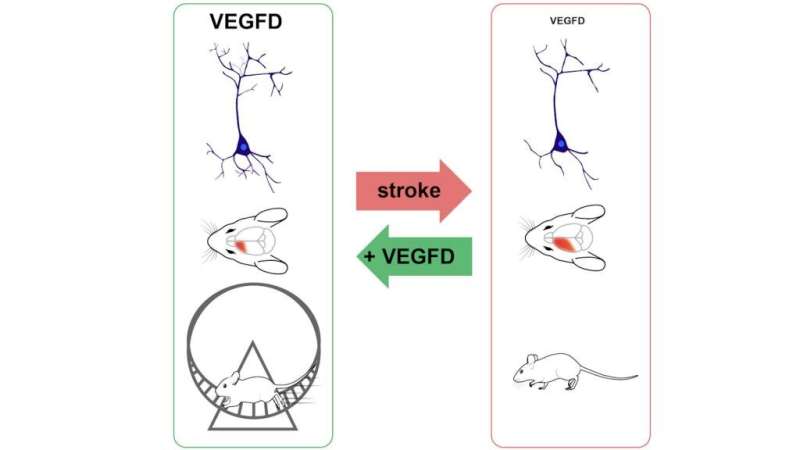Protecting the neuronal architecture

Protecting nerve cells from losing their characteristic extensions, the dendrites, can reduce brain damage after a stroke. Neurobiologists from Heidelberg University have demonstrated this by means of research on a mouse model. The team, led by Prof. Dr. Hilmar Bading in cooperation with Junior Professor Dr. Daniela Mauceri, is investigating the protection of neuronal architecture to develop new approaches to treating neurodegenerative diseases. The current research findings were published in the journal Proceedings of the National Academy of Sciences.
Brain nerve cells possess many arborised dendrites, which can make connections with other neurons. The highly complex, ramified structure of neurons is an important precondition for their ability to connect with other nerve cells, in order to enable the brain to function normally. In earlier studies, the Heidelberg researchers identified the signal molecule VEGFD—Vascular Endothelial Growth Factor D—as a central regulator for maintaining and restoring neuronal structures. "Our current research results demonstrate that a stroke as a consequence of an interruption of the blood supply to the brain leads to a reduction of VEGFD levels. That causes the nerve cells to lose part of their dendrites. They shrink and this leads to impairments of the cognitive and motor abilities," explains Prof. Bading.
Based on these findings, the researchers at the Interdisciplinary Centre for Neurosciences explored the question of whether the reduction of neuronal structures after a stroke can be prevented by restoring the VEGFD levels. To that effect, they applied recombinant VEGFD—produced using biotechnological methods—to the brains of mice that had suffered a stroke. "The treatment successfully preserved the dendritic arborisation and, what is important, brain damage was reduced. Furthermore, the motor abilities recovered more quickly," says Prof. Mauceri. In a second step, the researchers administered a modified form of VEGFD as nose drops, in order to simplify the treatment. They achieved the same results with this peptide mimetic, i.e. a simplified but biologically still effective version of VEGFD, which was developed in cooperation with Prof. Dr. Christian Klein from Heidelberg University's Institute of Pharmacy and Molecular Biotechnology.
The scientists hope that their research findings to protect the neuronal architecture will lead to new approaches to treating stroke in the long run. "The principle of nasal delivery, in particular, would be a safe and simple form of intervention," says Prof. Bading. The Heidelberg scientists are now working on expanding the treatment trialed in the mouse model with a view to a possible clinical application.
More information: Daniela Mauceri et al, Nasally delivered VEGFD mimetics mitigate stroke-induced dendrite loss and brain damage, Proceedings of the National Academy of Sciences (2020). DOI: 10.1073/pnas.2001563117
















